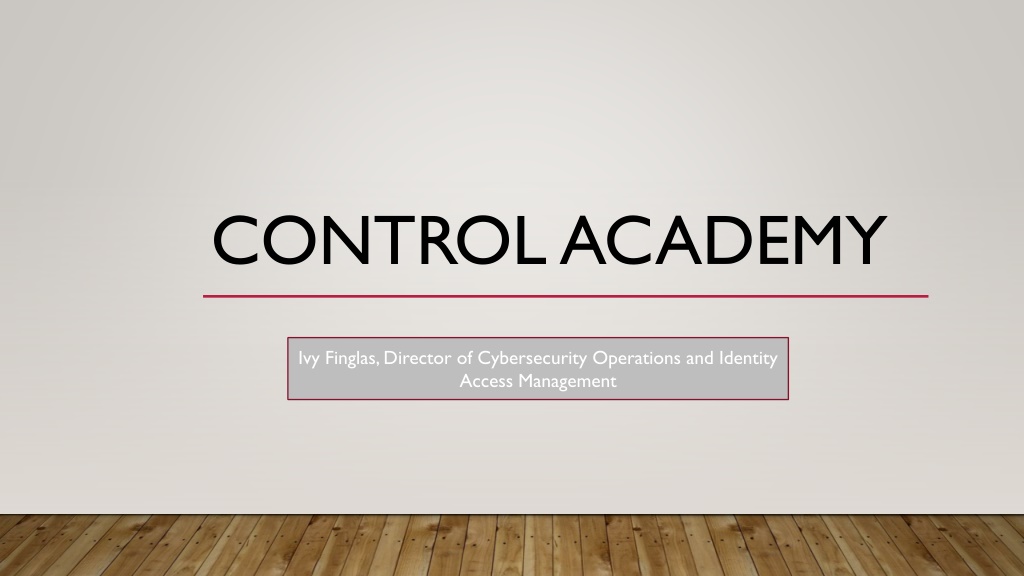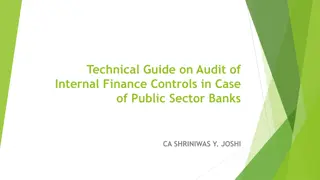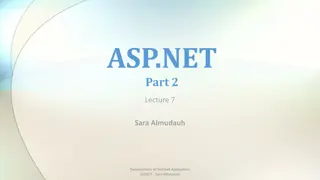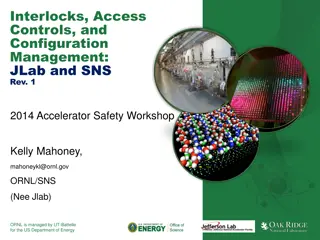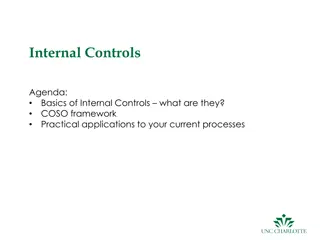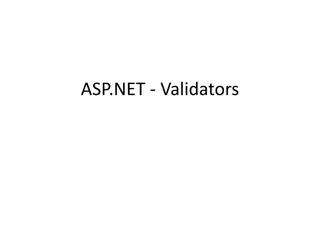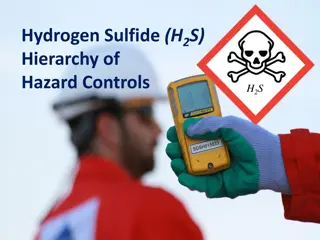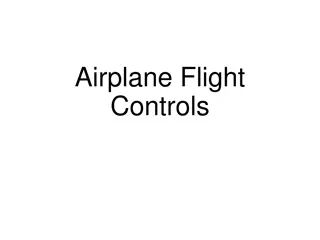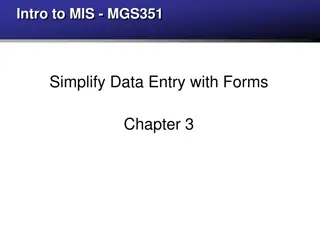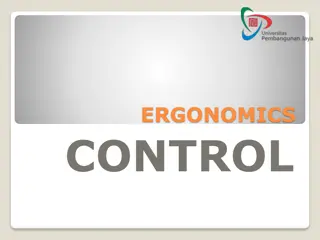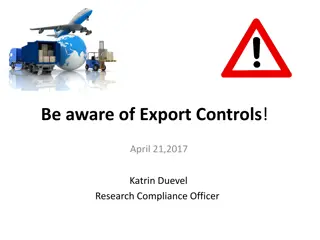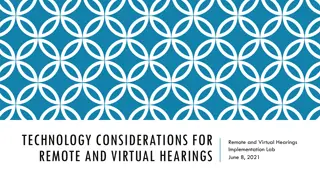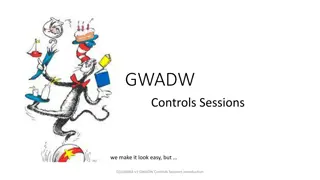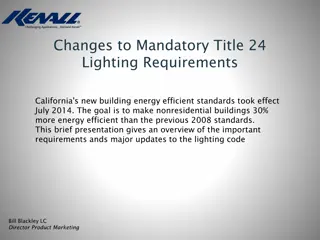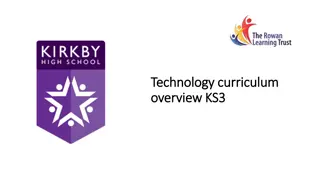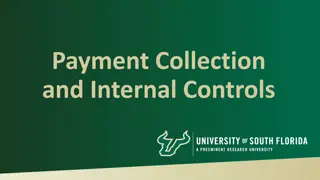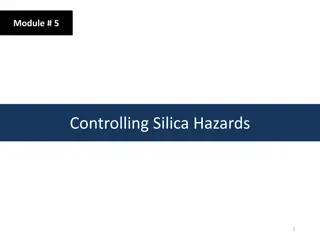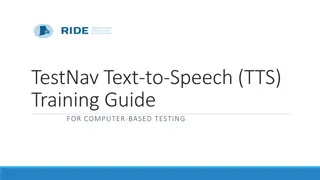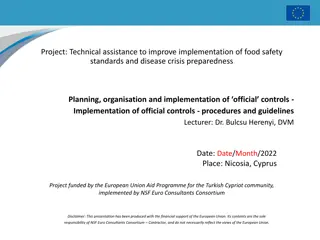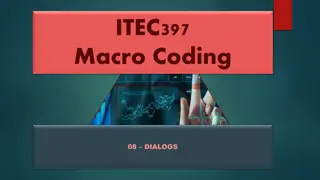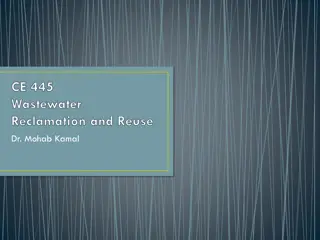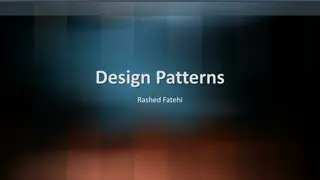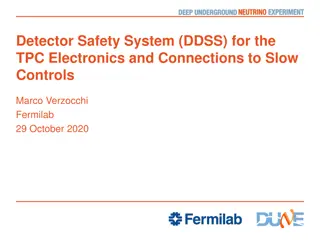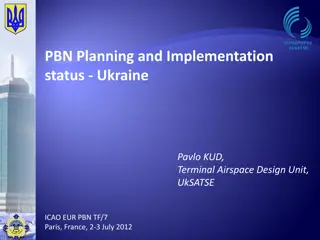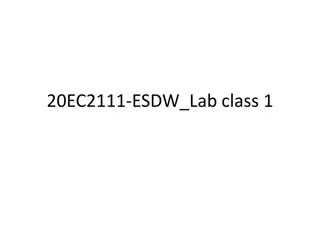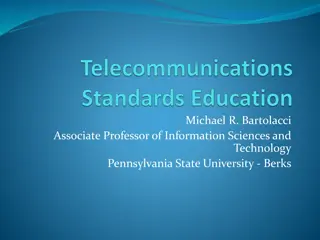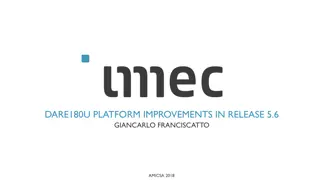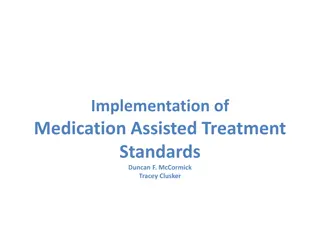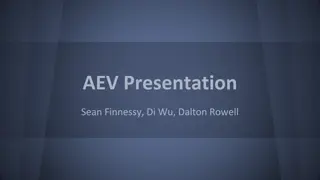Information Technology Controls: Design and Implementation Overview
Presentation by Ivy Finglas, Director of Cybersecurity Operations at Control Academy, focusing on the importance of information technology controls, their definition, and the responsibilities for designing and implementing them effectively.
Download Presentation

Please find below an Image/Link to download the presentation.
The content on the website is provided AS IS for your information and personal use only. It may not be sold, licensed, or shared on other websites without obtaining consent from the author. Download presentation by click this link. If you encounter any issues during the download, it is possible that the publisher has removed the file from their server.
E N D
Presentation Transcript
CONTROL ACADEMY Ivy Finglas, Director of Cybersecurity Operations and Identity Access Management
GOALS OF THE PRESENTATION This presentation is focused on Information technology controls What is a control Who is responsible to design and implement controls The difference between control design and operating effectiveness and why it matters Advise for IT and leaders in general on where to start and what to do A moment on frameworks The IT controls you should always have, we will not cover everything Appendix with resources
WHAT IS A CONTROL A measure put in place to prevent, detect or correct. In summary a countermeasure Password controls, authorization approvals for access and security systems on door access are preventative controls Reviewing event or security logs is a detective control Restore from backup is a corrective control
WHY DO WE NEED THEM ISNT SECURITY AND AUDIT RESPONSIBLE FOR THEM? Implementing good controls is the job of the leadership and teams responsible for the function not just IT or security Not all controls are security focused, and security is everyone responsibility to appropriately protect the University Controls demonstrate good management practices and should not be implemented just to remediate and audit finding, moreover they should be designed well to be sustainable demonstrating good design and operating effectiveness
X BAD CONTROL DESIGN = UNMITIGATED RESIDUAL RISK AND AUDIT FINDINGS There are no policies, standards, procedures or SOP s demonstrating management has not taken the time to set expectations so that control design is based on a respected industry framework such as NIST or CIS benchmark Approvals for access are obtained but not stored as evidence Logs are captured but not reviewed to identity security events A reconciliation of asset inventory is not complete and accurate Patching is not being tested prior to implementation
X BAD OPERATING EFFECTIVENESS = UNMITIGATED RESIDUAL RISK AND AUDIT FINDINGS Approvals are required by policies and standards and the control performer did not obtain or store the approval Password changes are required by policies and standards but are not implemented Changes are required to go through a formal change process but are occurring outside of it without governance and oversight aka rogue changes Critical patches are required to be applied to the systems within 30 days but is not occurring timely A disaster recovery plan is required however it is not formally documented, and battle tested
WHERE DO I START? I HAVE NO BACKGROUND IN AUDIT OR SECURITY It depends on the threat It depends on the function and the components being managed for example server, databases, applications A good architecture review is the first step to understanding threats and risks to identity key control points needed Documenting the current and future state process in a flow of events helps to identity where controls are needed and where gaps exist
UNDERSTAND THE IT ARCHITECTURE OF THE PROCESS I am just concerned with controls on the web server Web Firewall Loadbalancer Application Server Internet Oracle database
MAP OUT THE PROCESS TO IDENTITY CONTROLS AND CONTROL GAPS The accounts management team route the ticket to all the groups who can grant the access A ticket is received requesting access The approver reviews the request and approves Each IT group who review the ticket validate that approval has been obtained and is attached to the ticket prior to granting access Who can tell me the key preventative control in this process?
THERE ARE MANY FRAMEWORKS AND STANDARDS WITH DIFFERENT PURPOSES NIST Most frameworks have common security controls and data protection controls ITGC s OWASP CIS Use a framework applicable to the problem you are trying to solve CIJS PCI GDPR GLBA
KEY LOGICAL ACCESS RELATED CONTROLS Access should adhere to a defined policy/standard Access should always be least privilege at application, server and database layers Access should be traceable for accountability refer to logging Approvals should always be obtained and stored for access provisioned Access should be removed timely when no longer required for all accounts Access should be monitored periodically to enforce least privilege, detect misuse, and mistakes and to detect cyber attacks
PASSWORDS ARE PRECIOUS Password should adhere to a defined policy and standard and periodically changed and never shared, publicly available or reused Default passwords often publicly known should be changed after implementation Root/superuser passwords especially should be changed, not reused and protected using encryption if possible
A SECURE CONFIGURATION IS LIKE THE SHUTTERS IN A STORM Adhering to the framework/standard that is set is the first step If no framework or standard is set consult the CIS benchmark for the version of the operating or software being used or consult Cybersecurity Endeavor to apply the scored controls and document a rationale for any controls that cannot be applied to demonstrate due diligence and a valid reason for example using the most current encryption available is a wise choice Realize that misconfigurations are often exploited by attackers and are one of the key findings when a penetration test is completed
LOGGING IS THE DIGITAL FOOTPRINT FOR ATTACKERS AND TO DIAGNOSE ERRORS Logs should be complete and accurate from source to destination systems Logs should be retained in adherence with compliance for the data types usually one year is sufficient Logs should be reviewed on a set schedule to detect abnormalities and action should be taken to investigate and resolve Logs should be sent real time to another source to ensure integrity Evidence of any investigation should be documented and retained A supervisor should periodically review the logs of their system to provide oversight over the administrators
PATCHING THE HOLE IN THE BOAT Patching should adhere to a defined policy and standard, for example zero days should be patched asap if exploited in the wild Patching should be tested prior to implementation into production Patching should follow the change management process in place refer to change management Patches are often exploited by attackers after reconnaissance and are one of the key findings when a penetration test is completed for example outdate operating systems
DISASTER RECOVERY THE UNPLANNED100 YEAR STORM Disaster recovery should follow a defined policy and standard Disaster recovery plans should comprehensively document the system components, who manages them and how to recover them in a disaster for example from a backup, tape, software reinstall etc Disaster recovery plans should be tested periodically and adjusted as needed Disaster recovery plans should exist in hard copy Ideally the business continuity process should also exist as noted above in case the disaster results in the systems being unavailable for a long period
WEB APPLICATION SECURITY MY ADDRESS IS KNOWN TO THE PUBLIC HTTP OR HTTPS Web applications should follow a defined policy and standard based on an industry framework such as OWASP top ten Web applications should have all the previous controls on each component and at each layer as well as be scanned for the top ten vulnerabilities prior to launch If the Web applications is custom coded a manual code review should be performed by a peer or an automated code review prior to launch
CHANGE MANAGEMENT Changes should follow a defined policy and standard All changes should have a ticket/evidence of all work performed All changes should be approved in accordance with risk profile Preapproved changes should be based on a defined SOP Changes that have wide scale impact should be approved by a governance board of all service line leaders All changes should be tested Large scale changes should follow an industry standard for project management and system development life cycle All changes should have a plan to roll back the change
CONTROLS IN SUMMARY Controls should be designed well for sustainability and should operate continuously They should be based on an industry framework/standard and adhere to internal policies and standards Management need to understand where the risk is to mitigate it Controls should work together to create a control ecosystem complimenting each other Controls are not just for auditors they demonstrate management is committed to confidentiality, integrity and availability of systems and protecting the University data from cyber attacks everyone owns security Controls should do more than exist logging without a review is a waste of time Security is everyone's responsibility
APPENDIX LINKS TO FRAMEWORKS AND INTERNAL POLICIES AND STANDARDS USNH Cybersecurity web page Cybersecurity | Enterprise Technology & Services (usnh.edu) National Institute of standards and technology controls SP 800-53 Rev. 5, Security and Privacy Controls for Info Systems and Organizations | CSRC (nist.gov) CIS benchmark Controls 18 is the New 20: CIS Controls v8 is Here! (cisecurity.org) Crosswalk of controls from NIST and CIS CIS Controls v8 Mapping to NIST CSF (cisecurity.org)
